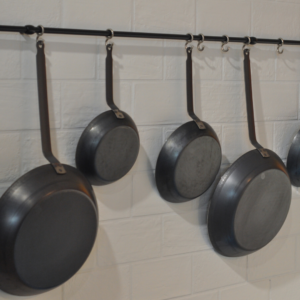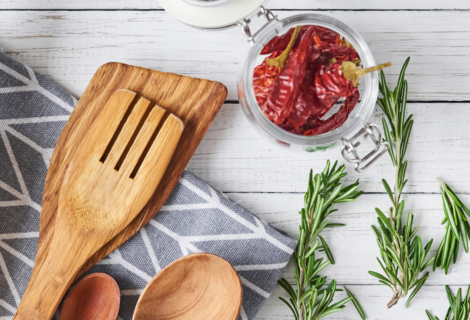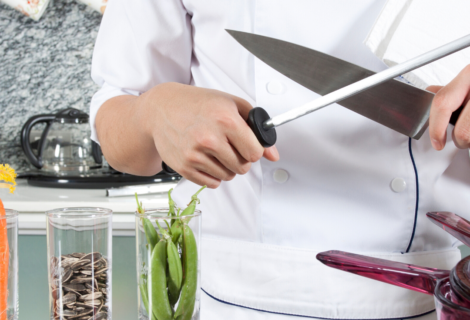Kitchen Staples for the Home Cook (Pots & Pans)

It’s hard to talk about cooking without covering the basics of what is useful to have in your kitchen, both equipment and food staples. I will cover the equipment in this post as the food staples greatly depend on what food culture you like to cook. For some, these lists will be repetitive as we already have established kitchens, and while this will certainly be a great start for beginners, my hope is to help you not only de-clutter your kitchen and streamline the cooking process to make your time in the kitchen more efficient, but to find cooking enjoyable!
Pot & Pans
While buying a pan set, there are a few things to consider; purpose and material. What I mean by that is does the set you are looking at have a variety of pots and pan for specific purposes? What material is the set made from?
- Stainless steel
- Copper
- Aluminum
- Carbon steel
- Cast iron
- Non-stick

Now, the type of pots & pans you get will change how you cook with them, and like learning to drive a new car, it takes some getting used to. This is a time to do your research on the brands, the materials, read the reviews, and be willing to spend money on a good set. With proper care and a quality set, this is an investment well made. I chose to purchase a stainless steel set which comes with the 4 pots (varying sizes), 3 frying pans (varying sizes), and a saute pan, all with tight fitting lids. I have also purchased a few (Made Without PFOA) non-stick pans separately to complete my personalized set.
Cooking with stainless:
The trick with cooking with stainless steel is High heat. The common misconception with stainless steel is that you need to cook with more fat vs the nonstick counterpart. It is true, you do need to cook with fat to help in the cooking process, but it is a combination of the fat and the Maillard reaction that happens when food is properly seared over high heat that prevents food from sticking.
In 1912, Louis-Camille Maillard, a French medical researcher discovered that protein rich foods (meats, nuts, cereals, and many vegetables) change on a molecular level when food temps reach 284*F. The amino acids and sugars in the food basically start to meld together, creating friction and steam. It is the fat and the friction of the changing molecules that create steam which starts the “lift” of the food from the cooking surface as it is “caramelized” with a crust. This is a relatively fast cooking method, so it is important to have all the components of the dish ready to go in the pan in quick succession (mise en place – everything in it’s place).
Think of cooking a piece of meat, the two terms commonly used with this method is “searing” and “caramelization”. As the sugars mingle with the amino acids and start to cook, the sugars brown creating a “crust” on the food. It is at this point you can turn the food as it naturally lifts from the pan. If left any longer, the sugars burn and meld to the pan (we’ve all been there, and the best way to overcome is heat, preparedness, and attention to what your food is doing).
Proper care:
Cleaning a pan without a non-stick coating has long been touted as arduous and time consuming. Don’t buy into the post war hype from the 50’s, it is easier than one is led to believe! Simply boiling water in your dirty pan (which is a method called “de-glazing” and can make wonderful pan sauces) can loosen and release any stuck on foods, followed by washing with soap & water. For stubborn bits and periodic polishing, I like to use Barkeeper’s Secret, then follow up with a good wash and thorough rinse.

Cooking with Non-stick:
Non-stick pans are perfect for delicate cooking. Things like eggs, pancakes and crepes that should be cooked on medium to low heat and do not require browning or frying. Going back to the myth “Cooking with non-stick is healthier because you use less fat”, that was used as a selling point for non-stick pans when they first came onto the market during the 50’s. The reality is, unless you are using medium heat or lower to cook with, the chemicals break down and start to leech into your food (even if the product marketing says PFOA- Free). These chemicals have been proven to be highly carcinogenic and can have some seriously adverse health and environmental affects. I will stay off that soap box today, but if you are interested in learning more, the Netflix Documentary, The Devil We Know explains the issue not only with cooking with the Teflon chemical PFOA, but the environmental affects it causes in creating it.
Proper Care:
- Avoid Metal Utensils when cooking – scratching the surface will ruin the finish and eventually cause flaking
- Avoid Excessively High heats – Medium heat or lower will protect your nonstick surface and reduce leaching of any chemicals
- Avoid Thermal Shock – Going from stove to sink water
- Avoid Abrasive Sponges and Never use the Dishwasher
- Avoid Stacking Pans- if you cannot hang your pan sets, place rubber foam cut to size in between each pan (we got ours from the Dollar Store where you find the contact paper/drawer protectors)
- Avoid Cooking Sprays – Long term use can create a coating over the non-stick that can ruin the surface.





Recent Comments